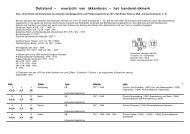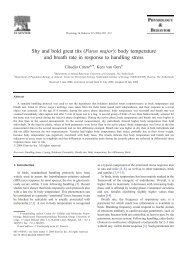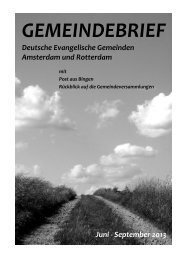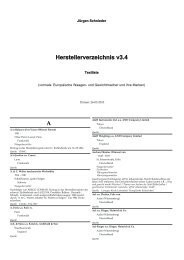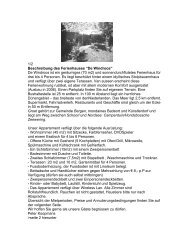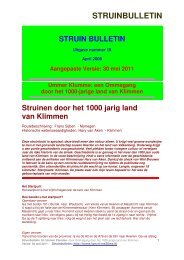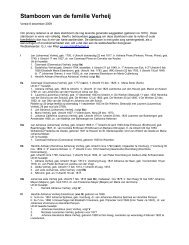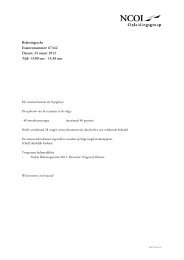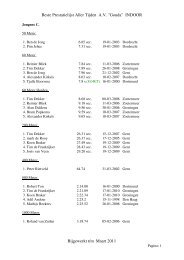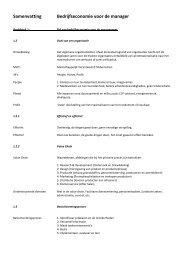The Makassar Malays - Cambridge Journals
The Makassar Malays - Cambridge Journals
The Makassar Malays - Cambridge Journals
Create successful ePaper yourself
Turn your PDF publications into a flip-book with our unique Google optimized e-Paper software.
398<br />
heather sutherland<br />
influence. Islamic since the early fifteenth century, Melaka was not just a magnet for traders from<br />
China, India, Europe and Southeast Asia; it also provided the archetype of the ideal Malayo-Muslim<br />
polity. Its capture first by the Portuguese in 1511, and then by the Dutch in 1641, caused the torch of<br />
Malay pride to pass to sultanates such as Aceh and Johor, while traders fled to independent ports. 3<br />
<strong>The</strong> resulting Malay refugee communities, including that at <strong>Makassar</strong>, could draw upon<br />
collective commercial know-how and Islamic credentials. <strong>The</strong>se enhanced their ability to access<br />
protection, products and markets in palaces and coasts from the Straits of Melaka and Cambodia to<br />
the Philippines and West Papua. <strong>The</strong> Malay language was a recognised lingua franca of trade and<br />
diplomacy (alongside Portuguese), and was also central to burgeoning Islamic court cultures.<br />
<strong>Makassar</strong>, on the southwest peninsula of Sulawesi (Celebes), was home-port and political<br />
centre of the Goa-Tallo’ polity. Since the early sixteenth century it had developed as a multi-ethnic<br />
port, sheltering a cosmopolitan court, floating populations of seafarers and various diaspora<br />
communities. Both <strong>Makassar</strong>’s rapid rise to success in the sixteenth century and its subsequent<br />
subjugation (in the 1660s) by the Dutch East India Company were driven by its crucial role in the<br />
spice trade. Commercial revenues strengthened the court, and in return elite patronage and<br />
protection sustained commerce.<br />
This virtuous circle was broken with the coming of the VOC. <strong>Makassar</strong>ese kings were replaced<br />
by Company officials, and access to spices was denied, disrupting the entire system. New<br />
constellations of power and wealth gradually emerged, with Buginese Bone replacing <strong>Makassar</strong> as<br />
the paramount regional kingdom. Economic reorientation was a painful process, and only towards<br />
the mid-eighteenth century did a strong new commercial thrust emerge with the export of seaproducts<br />
to China. Role redefinition was particularly acute in the case of the <strong>Malays</strong>, as they made<br />
the transition from fierce opponents of Dutch encroachment to trusted allies of the Company.<br />
Nonetheless, they managed to maintain a strong economic position, where others fell back in the<br />
face of Chinese competition. <strong>The</strong>se realignments were accompanied by the rise to dominance of<br />
one particular extended family.<br />
<strong>The</strong> following account of the <strong>Makassar</strong> <strong>Malays</strong> locates them in two arenas: trade and the town<br />
itself. We will begin by considering the character of <strong>Makassar</strong>’s commerce and the early history of<br />
the Malay community before turning to the Dutch conquest.We will then trace their further history<br />
in sections entitled ‘Society and Settlement’ and ‘Authority and Identity’, before concluding with an<br />
assessment of Malay adaptation to Company rule, and of the ambiguities inherent in discussing<br />
ethnic communities.<br />
Trade and early history<br />
<strong>Makassar</strong>’s development into an essential link in Southeast Asia’s seventeenth-century trading<br />
system has been well described. 4 As Anthony Reid has observed:<br />
3 Barbara W. Andaya and Leonard Y. Andaya, A History of <strong>Malays</strong>ia (London: Macmillan, 1982); L. F. F. R. Thomaz,<br />
‘<strong>The</strong> Malay Sultanate of Melaka’, in Southeast Asia in the Early Modern Era: Trade, Power and Belief, ed. Anthony Reid<br />
(Ithaca, NY: Cornell University Press, 1993), pp. 69-90.<br />
4 J. Noorduyn, ‘De Handelsrelaties van het Makassaarse Rijk Volgens de “Notitie” van Cornelis Speelman uit 1670’,<br />
Nederlandse Historische Bronnen, 3 (<strong>The</strong> Hague: Martinus Nijhoff, 1983), pp. 96-123. Anthony Reid, ‘<strong>The</strong> Rise of<br />
<strong>Makassar</strong>’, Review of Indonesian and <strong>Malays</strong>ian Affairs [henceforth RIMA], 17 (1983): 117-60; Reid, Southeast Asia in the<br />
Age of Commerce 1450-1680: Volume Two: Expansion and Crisis (New Haven: Yale University Press, 1993); John Villiers,<br />
‘<strong>Makassar</strong>: <strong>The</strong> Rise and Fall of an East Indonesian Maritime Trading State, 1512-1669’, in <strong>The</strong> Southeast Asian Port and<br />
Polity: Rise and Demise, ed. J. Kathirithamby-Wells and J. Villiers (Singapore: Singapore University Press, 1990), pp. 143-<br />
59; J. Noorduyn, ‘De Islamisering van <strong>Makassar</strong>’, Bijdragen tot de Taal-, Land- en Volkenkunde (henceforth BKI), 112<br />
(1956): 247-66.





